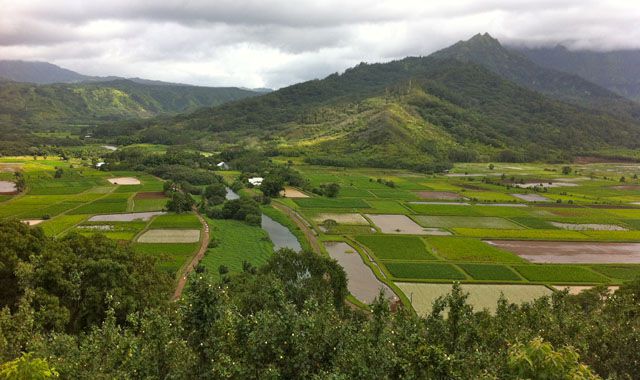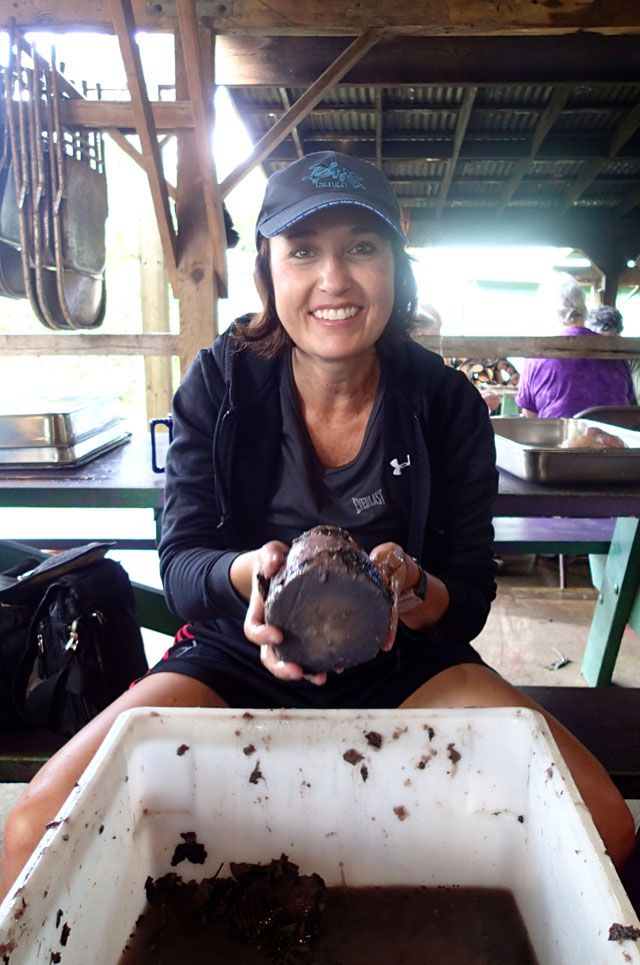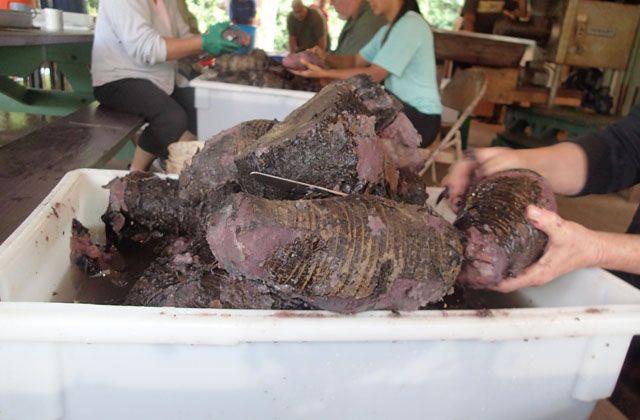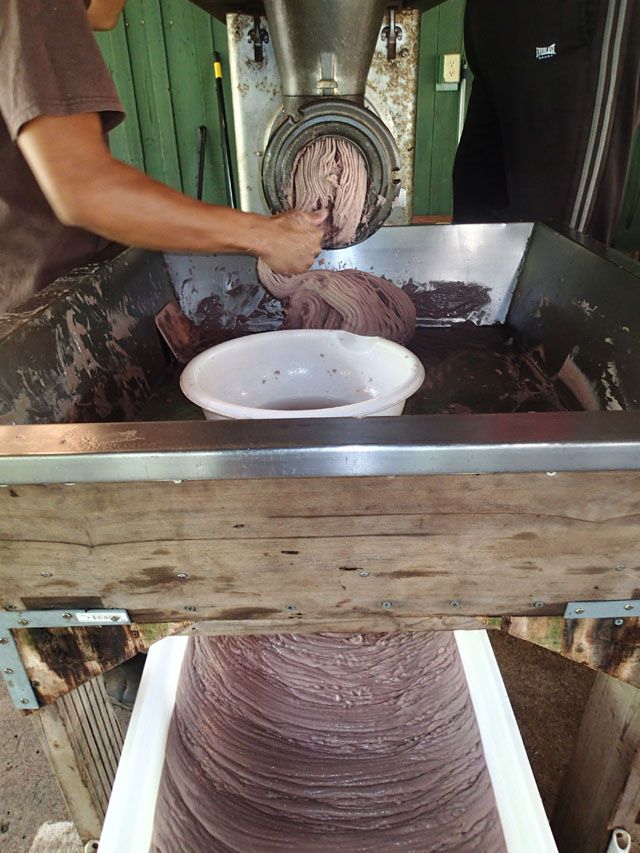I say potato, you say patato.
I say tomato, you say tamato.
I say taro, whereas in Kauai, many will say kalo.

Regardless of how you say it, on your travels to Kauai, you will no doubt come across taro in one of its numerous forms whether eating poi at a luau or awing at the taro field vista on the North Shore just outside Hanalei. Taro or kalo is a root vegetable that grows in sub-tropical paddy fields. It has heart shaped leaves that can be eaten like kale or spinach, but it most well known for its root. Many explain taro simply as a dietary staple in the Hawaiian culture, similar to a sweet potato, but it’s role is on a grander scale; in fact, taro (kalo) is considered as an elder sibling to Hawaiians, showcasing the importance and interdependence of a’ina (land) and ohana (family).
With a fame of not meeting a starch that I didn’t like, this Spring, I decided to learn more about taro, in particular how it was harvested, cooked, and cleaned to make both traditional Hawaiian dishes and other cultural variations. I stumbled upon an organization in Hanalei called Waipa, which is a non-for-profit, Native Hawaiian learning and community center on Kauai’s North Shore, which hosts many activities to teach of local lifestyle and customs, all in touch with the a’ina (land). One of Waipa’s activities in Poi Day, where a community of volunteers both local and not join together to clean cooked taro and process it into poi. In order to keep taro and poi as part of the Hawaiian diet, Waipa provides both to the community at a very affordable cost, almost at fifty-percent.
The volunteer day starts bright and early, typically at 5 am for those seasoned and 7 am for first-timers. Be prepared for rolling up your sleeves, getting dirty, and working hard. However, for those wanting to get in touch with local culture, customs, and cuisine while traveling in Kauai, the conversation with locals and visitors followed by lunch cannot be topped. Check out what the experience looks like!



They say that the best way to a man’s heart is through his stomach. Likewise, I believe that the best way to learn about a culture is also through its cuisine; you have to taste it, smell it, and cook it. Contrary to what most visitors think, it isn’t only about the poi that is served at luaus. There is more to taro or kalo that meets the eye. Taro has over three-hundred varieties, distinct flavors, and can be used roasted, baked, boiled, fried, sauteed, barbecued, broiled, and more. I have to chuckle as I write this because I can hear Bubba from Forest Gump talking about shrimp: shrimp-kabobs, shrimp creole, shrimp gumbo, and etc. Taro is equally as versatile for coconut taro cakes, taro macaroni salad, taro chips, taro home fries, table taro, and so much more. And, I can vouch for it; I’ve tried all listed above and not stopping now.
As always, stay up-to-date on more adventure travel and cultural tourism stories and tips from Kauai and more by connecting with me on Facebook, Twitter, Google+, and YouTube. And, please share your best Kauai travel stories and/or tips. I love hearing from other adventurers like myself, especially if you have taro recipes or tips to share.
Here’s to more good times and good stories.
